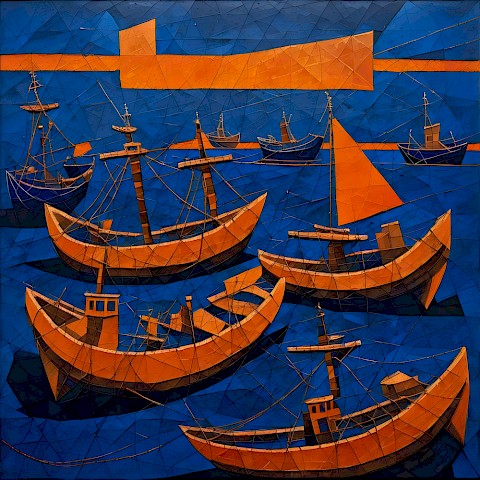|
17 XI 2024 |
4. Success at the Royal Academy 1801-12
079 - Boats carrying out Anchors and Cables to Dutch Men of War in 1665 | |

| ||
|
According to Farington Turner painted most of this picture in one of the Keeper's rooms at the r.A., probably because his own studio was still occupied by builders. During the exhibition Farington reported that Turner was concerned about his seapiece being hung under the white drapery of Copley's portrait of Mrs Derby as St. Cecilia'. However, Turner sold the picture to Samuel Dobree and actually arranged for it to be delivered to Dobree on 2 July 1804. This is recorded in a letter from Turner to Dobree published by Hilda Finberg (‘“Turner to Mr. Dobree": Two unrecorded letters' in Burlington Magazine XCV, I953, pp.98-9) although the price seems not to have been agreed upon before the picture was sent. Hilda Finberg suggests that criticisms of the picture during the exhibition may have encouraged Dobree to try to get a reduction. The date of delivery means that Turner must have removed the picture before the end of the exhibition, which may have been one cause of his disagreement with the Council that year (see No.81; the exhibition opened on 30 April and ran for approximately three months.) On the whole, the picture was not favourably received at the Academy although the Star and the Monthly Mirror both had something to say in its favour. The St. James's Chronicle (12-15 May) called it ‘a fine sea-scape' but added ‘but the sailors in the boats are all bald, and like Chinese'. The Sun (10 May) also had some harsh things to say: 'Why the scene before us should be placed so far back as in 1665, it is difficult to conceive, except by referring to that affectation which almost invariably appears in the work of the Artist. There is nothing in the subject to excite an interest. The figures are very indifferently formed, and the Sea seems to have been painted with birch-broom and whitening.' Farington records that Opie said the water in Turner's seapiece looked like a ‘Turnpike Road' over the sea. Northcote said he should have supposed Turner had never seen the sea. It seems likely that Turner made a mistake in the date in his title and that the scene he portrayed refers to the end of 'The Four Days' Battle of 1-4 June 1666. On this occasion the British fleet came upon the Dutch fleet at anchor seven leagues from Ostend. Admiral de Ruyter's Journal records, ‘We saw the English fleet, about 70 sail in strength bearing down upon us. Owing to the heavy seas we could not weigh our anchors. At noon we all had to cut our cables, some losing a cable 9 and a half, and some two whole ones….’ An image generated by an AI Machine Learning Model Property of the artist. | ||
